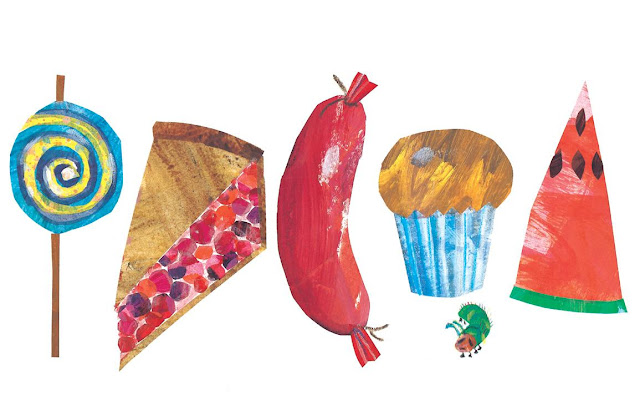Though we have an idea of what our children's book is going to be about, many of the previous winners and children's books in general seem to have an underlying message or moral to the story. The Charlie and Lola book "I Will Not Ever Never Eat a Tomato" conveys a message similar to the one we also wish to communicate. The story tells of Lola being a picky eater and not liking any of the foods which are placed in front of her, however her brother Charlie convinces her otherwise by making up elaborate and imaginative back stories to these food items, such as fish fingers being the food of mermaids. In the end Lola begins to engage with Charlie's stories, making comments such as "Yes, I know the ones. I think I've had them before" and convinces herself that in fact she does like these foods. Our story will take a similar approach in showing that something which may seem boring can actually be very exciting, reflecting on the huge imaginations children have.
In addition, both the illustration and type style is something we initially thought about adopting in our own children's book. The illustrations take a multi-media approach, using some parts illustration and merging these with real life photographic elements or collaged materials and textures. As illustrator Laura Carlin suggested, the characters and the narrative must be believable as real people and stories, which I feel is something this approach to illustration helps to reflect since it brings in real elements that children are able to recognise and associate with. The playful type style then works with these in reinforcing the narrative of the book and specifically each page. For instance, in the image above you can see that the type has been set in wavy lines in order to reflect the motion of the sea and being underwater as the images show them as being. However, in adopting this style we must also be careful not to manipulate the text so much as to reduce it's legibility.
Eric Carle, "The Very Hungry Caterpillar".
Similar to the illustrative style of the Charlie and Lola books, 'The Very Hungry Caterpillar' makes use of texture and collage within the book illustrations. It can be seen that textures have been produced initially using various different colours, which have then been cut into shape and placed together to form imagery. The book works effectively to highlight these textures through the large use of white space which means the detail of these do not get sucked into the background and dismissed. This will be considered in our own children's book, playing on the idea of contrasts through the significant use of black and white with the odd use of colour, highlighting the more important elements and characters within the story so that these do not get lost amongst other things, as well as to partially reflect on the mood of the story line.





No comments:
Post a Comment